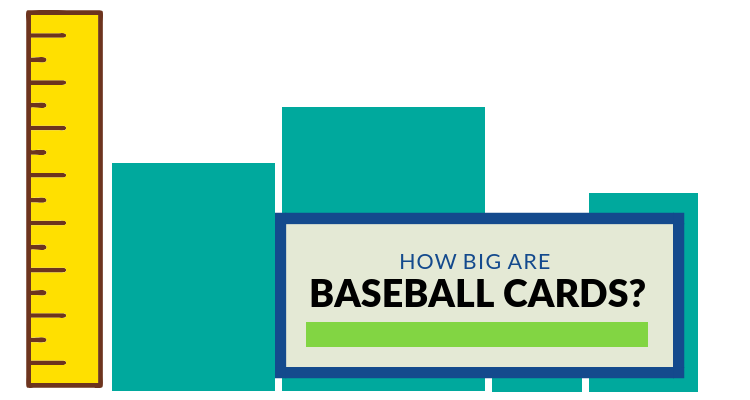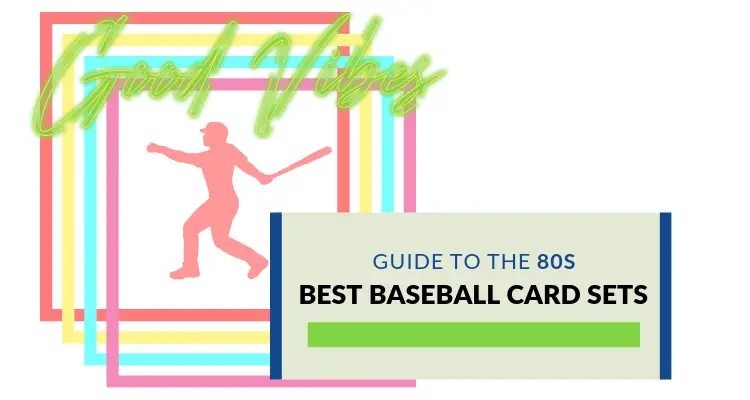The time has come to go through old belongings at your parent’s house, or you have finally decided to just declutter. Among the trophies, old school projects, clothes, and other items you’ve held on to is that big tub of 80s baseball cards or the 10 90s binders you’ve been lugging around from home to home.
The first step is taking action, and now, the second step is figuring out what you’re actually going to do with all of those old baseball cards. I mean, you’ve kept them this long for a reason—you might as well take proper care and consideration when it comes to what to do next.
From going through your collection again to donating them, to even deciding to keep them a bit longer, there are a number of things you can do with your old cards.
1. Sort through the cards
There isn’t any great way to give guidance here, but think back to the big names you’re familiar with, and perhaps just look through some eBay listings for the years of cards you have.



(If you don’t know the year of a certain card, turn the card over and look to the fine print at the bottom of the card or to the list of stats; if looking at the yearly stats, add a year to the last year listed. So, if the last year on the card is 1998, then you’re probably holding a 1999. Not a foolproof way of identification, but it will get you in the ballpark.)
Also look for rookie cards (which tend to hold more value) and anything out of the ordinary. That is, if you have a stack of cards that all pretty much look the same, but one of them has a different color or gloss, it might be one to set aside.
2. Check card values

After you’ve taken a look, now it’s time to check their values. Per the previous step, if you feel you have decent card knowledge, you can go through your old cards and pull out those you feel might have some value. Then, just head to eBay and take a look at the completed listings to see what those same cards have recently sold for.
eBay sold card data offers a trove of valuable information, but only goes back 365 days. If you think you have something really rare and can’t find a current eBay listing for it or a sold listing over the last year, another option is Worthpoint which has years and years of data on some items.
If you want to dive a little deeper, there are a number of baseball card apps with price histories, trend graphs, and more. Scan the card and off you go:
Now, a big caveat here, and something to consider. Many of the higher-value cards might have rare parallels, while others just might be difficult to identify in terms of their potential value. So, even if you know Ken Griffey Jr. was a big-name back when you were accumulating cards, it might be the rare refractor of someone lesser known that you pass by.
Again, there is a wealth of knowledge available online, and pretty much any card can be identified. Of course, it just comes down to time and how willing you are to look up some cards, most cards, or all cards. Different card platforms, websites, blogs, and even social media groups might be of help.
And here are some notes on what makes sports cads valuable in the first place.
3. Get the cards appraised
Stemming from the above, checking things out might lead to the realization that you don’t even know what you’re looking for, right? Sure, you might remember some of the big names from years past, but as the caveat mentions, there might be more to it.
So, if you aren’t confident in your card-eye at the moment, you might want to look into baseball card appraisals, and enlisting the help of someone a bit more knowledgeable to help you assign values. Kruk’s cards is always looking to help.
As is mentioned in that linked post, you might want to be extra mindful when the person evaluating your collection also offers to buy it. Any situation where an “expert” is working with someone who is known to have lesser knowledge on a particular item could lead to the seller being taken advantage of.
4. Sell the cards
This is #4 on the list for good reason. Some people will choose to sell their old collections “blindly”—that is, without really going through them and without obtaining some sort of knowledge or help on what they might be worth. If this sounds like you at this point, you might want to consider doing your best in helping the market decide.
For instance, if you are going to sell your old cards without taking the time to figure out what they might be worth, be sure that when you’re listing them, you’re doing so with the goal of describing and showing what you have as best as possible.
Meaning, there are countless listings on OfferUp, Facebook Marketplace, and even eBay that have very little detail in terms of what a potential buyer might be purchasing. So, with more risk on the buyer side, those cards may not sell for as much as they should. (Of course, you might actually sell for more than what the cards are worth if in fact there is very little value to begin with.)

My point is, if you unknowingly have $10 worth of cards, list them with very little detail, and they end up selling for $30, then you come out ahead. On the other hand, you might unknowingly have $300 worth of cards, and if you list them in the same manner, might only sell them for $30.
It really comes down to personal preference and circumstances. If you take the time to list the cards with as much detail as possible, a potential buyer might see something of value. And if one potential buyer sees something of value, so might another potential buyer, and then you have a bidding war.
Anyway, a lot to consider when it comes to selling your cards online, and there isn’t any way of knowing the best way to go about it given everyone’s situation – and stash of cards – is different.
5. Grade Them
This one might come off a little overwhelming, especially if you’ve been out of cards for a while and don’t know much about the current state of the hobby. And I won’t sugarcoat it—there is a lot to know!
Starting out with the simple definition of grading, it’s basically sending your card off to a card grading company who looks over the card and assigns it a rating. They then encapsulate the card and mail it back to you.

That grade or rating can drastically increase the value of the card, or it can bring the value down. Either way, there is a lot that goes into the process, and that includes even figuring out if it makes sense to grade cards or not.
Rather than get into it all right here, I have a number of resources for you to consider:
- How Much Does it Cost to Grade a Card
- Card Grading Near You or In-Person
- What Does GEM Mint Mean?
- What is a Slabbed Card?
6. Play games
That’s right—your old cards that don’t have nay monetary value could be hiding a ton of entertainment within their bent corners and creases. Baseball card games could include bingo, war, and even drafting-style games that test knowledge, provide fun, and more.
7. Donate
Last but not least, if you don’t want to go through any of the trouble above, you can always donate your old cards. This includes traditional donation stops like Goodwill and others, meaning you can simply pack them up and drop them off.
Read More: Goodwill Baseball Card Guide
That said, do you have a family member or friend who might enjoy them? While the cards might be old and meaningless to you, they probably once brought you joy, so why not try and pass that joy along to someone else?



